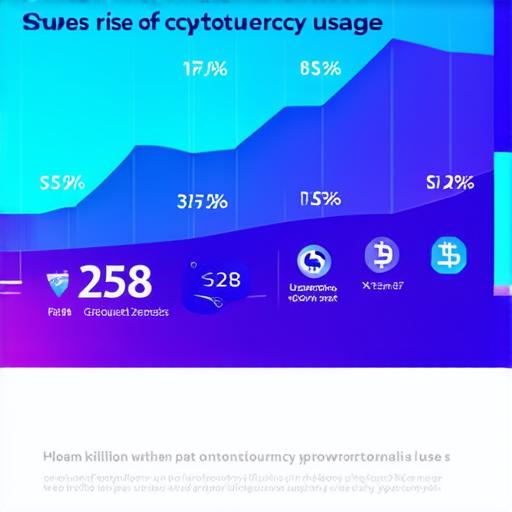Number of Cryptocurrency Users: A Snapshot of the Current Landscape
As cryptocurrency continues to evolve and gain traction in various industries, it’s important to understand the current landscape of cryptocurrency users. In this article, we will explore the latest data on the number of individuals using cryptocurrency and what it means for the future of this technology.

What is Cryptocurrency?
Before we dive into the number of cryptocurrency users, let’s first define what cryptocurrency is. At its core, cryptocurrency is a decentralized digital currency that uses encryption techniques to secure transactions and control the creation of new units. Bitcoin is the most well-known cryptocurrency, but there are thousands of others in existence, each with its own unique features and use cases.
The Rise of Cryptocurrency
In recent years, cryptocurrency has become increasingly popular as people look for alternative ways to store and spend money. The total market capitalization of all cryptocurrencies combined has grown exponentially, from just a few billion dollars in 2013 to over $1 trillion in 2021.
This growth can be attributed to several factors, including increasing awareness and adoption of cryptocurrency, as well as the development of new and innovative use cases for this technology. For example, cryptocurrency is increasingly being used for cross-border payments and remittances, as well as for online purchases and investments.
The Number of Cryptocurrency Users
So, what is the current number of individuals using cryptocurrency? According to a report by Statista, as of 2021, there are approximately 258 million people worldwide who own and use cryptocurrency. This represents a significant increase from just a few years ago, when the same report estimated that there were only around 70 million cryptocurrency users in 2017.
This growth can be attributed to several factors, including increasing awareness and adoption of cryptocurrency, as well as the development of new and innovative use cases for this technology. For example, cryptocurrency is increasingly being used for cross-border payments and remittances, as well as for online purchases and investments.
Case Studies: Real-Life Examples of Cryptocurrency in Action
To further illustrate the potential of cryptocurrency, let’s take a look at some real-life examples of this technology in action.
Cross-Border Payments
One of the key use cases for cryptocurrency is cross-border payments. With traditional banking systems, it can be difficult and expensive to transfer money between different countries. However, with cryptocurrency, transactions can be completed quickly and at a lower cost. For example, a person in the United States can send $100 to a friend in Brazil using Bitcoin, with no fees or delays.
Remittances
Cryptocurrency is also being used for remittances, which are payments made by individuals to their home countries. According to the World Bank, global remittance flows reached a record high of $689 billion in 2019. However, these flows are often subject to high fees and delays. By using cryptocurrency, individuals can send money more quickly and at a lower cost.
Online Purchases
Cryptocurrency is also being used for online purchases. With traditional payment methods like credit cards, transactions can take days to process and may be subject to fraud. However, with cryptocurrency, transactions are completed instantly and are much less likely to be fraudulent.
